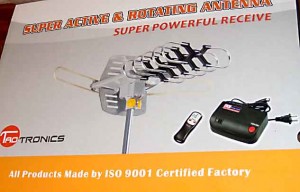Compliance is not optional!
Note: unless stated otherwise, this website refers to North America and EU markets.
In the rush to put products on the market, regulatory matters are sometimes given a low priority. It is the manufacturer’s responsibility to ensure products comply with all regulations for the marketplace. Here are three scenarios that could explain lack of compliance:
- The company may be unaware of applicable regulatory requirements. Since ignorance of the law is not an excuse, such companies need to learn the requirements.
- The company is aware of regulations, and believes they comply. Note that this often includes questionable judgement calls. For example, a company “ABC” sells computers, but believes that they can be treated as components, because some customers use the computers in larger systems. Such ideas can become unofficial policy, and are often a result of ‘groupthink‘.
- The company is aware of the regulations but chooses not to comply. This is a bad plan if a company bases it’s business model on repeat business. It is a viable strategy (but not ethical) for companies that want to sell products quickly, pocket the cash, and then dissolve the company to avoid warranty or damage claims.
Not in our House…a true story!
I am a big fan of free, on-the-air HDTV. We live in an area where all the local stations are can be received with simple “rabbit ears” (dipole) antenna. But in some rooms, the signal is a little weak and flaky, so I decided to try an amplified, rotating antenna sold online.
If it gave a good boost, I planned to install it in our attic.
Before assembling the antenna array, I inspected the combination signal amplifier and rotation control box.
The photos below illustrate several problems that were easily identified.
To legally import this device into the U.S., it must be tested and pass FCC interference limits for “unintentional radiators”. The manufacturer must conduct these tests at an approved test site, and must put the appropriate FCC label indicating “Class B” for home/consumer goods. Also, there is no agency (NRTL) safety mark on the box.
 Safety requirements vary among states and municipalities, but the AC power cord raises serious safety concerns. The absence of any safety agency markings mean this wire and plug probably do not meet all insulation (material & construction), conductivity (e.g. wire gauge, material) and durability (e.g. mechanical strength) requirements.
Safety requirements vary among states and municipalities, but the AC power cord raises serious safety concerns. The absence of any safety agency markings mean this wire and plug probably do not meet all insulation (material & construction), conductivity (e.g. wire gauge, material) and durability (e.g. mechanical strength) requirements.
There is no reason to believe this unit has been tested to ensure that a single component failure, including one due to normal wear & tear, doesn’t cause bodily harm (e.g. electrical shock) or property damage (e.g. fire or damage to the TV and other peripherals that are electrically connected to the unit).
To summarize: This product is not legal to import into the U.S. (FCC law), and it may be hazardous to install in a home and leave unattended.


